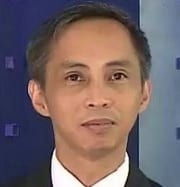
There is consensus, at least among the subscribing public, that President Rodrigo Duterte’s push for a new and third major telco player is desirable. The ordinary Filipino consumer supports this, and wants the third telco player to enter as soon as possible.
The Department of Information and Communications Technology (DICT) has been working hard towards meeting the President’s directive, going as far as presenting to the public the Highest Committed Level of Service (HCLOS) model for the selection process last February.
We have also learned recently through a social media comment by DICT officer-in-charge Eliseo Rio Jr. that the International Telecommunications Union (ITU) has recognized that the HCLOS model is a global best practice that the Philippines has essentially pioneered.
Unfortunately, last week, we learned that Department of Finance (DOF) secretary Carlos “Sonny” Dominguez III was cautioning the public that the process “cannot be rushed”, saying “The magnitude of the investment requires that all elements, including the necessary access to available telecommunications infrastructure, are in place for the new player.”
There are significant problems with Dominguez’s statement.
First, the magnitude of the investment is a given. From the now-suspended public discussions on the Terms of Reference (TOR) for the third telco selection process, it has been made clear to the public that any entity or consortium that wants to enter as the third telco must be ready to pour in several hundreds of billions of pesos of investment.
As there is no question about the magnitude, this should not be an issue. In fact, it is surprising that the DOF appears to be leery about the potential foreign direct investment (FDI) that will result directly from investments by whoever wins the third telco player bidding, as well as indirectly from investments in the construction, services, human capital management, and other ancillary sectors that will be supporting the third player rollout. It’s as if the DOF does not want the money from the third telco initiative that can help fund the President’s “Build Build Build” program.
Second, Dominguez is being vague — what does he mean by “all elements, including the necessary access to available telecommunications infrastructure” that need to be in place? (It does not help that reporters covering the story did not ask him to enumerate what these “all elements” are.)
That being said, the “access to available telecommunications infrastructure” is a non-starter — the third telco is expected to be spending its massive investment on rolling out its own telecommunications infrastructure.
The statement by Dominguez sounds like a catch-22: “you have to wait for infrastructure to be available before you can enter, but you have to build infrastructure.” In fact, if having to wait for infrastructure to be available is one of the elements that should be reason not to rush, the third telco has to wait for the existing duopoly to roll out infrastructure for the third telco to somehow use. The third telco has to wait on the duopoly? That is not sensible at all.
Third, even as we dispose of Dominguez’s position on Twitter regarding “access to available telecommunications infrastructure,” what are the other elements of these “all elements” that he mentions? (There is indeed much frustration among some advocates that the media did not follow up and ask the DOF to enumerate them.)
Clearly, there is only one set of activities that will serve as a solution to all of the above:
- One, make public all extant working drafts of the TOR, to promote complete transparency and to restart the stakeholder discussions on the third telco initiative. The Oversight Committee designated by the President’s Administrative Order No. 11, series of 2018, should do this immediately.
- Two, begin agreement on and approval of the salient points of the working draft. The DICT, being a technology department, can implement means to do this leveraging various technology platforms. Transparency will be key to timeliness and success.
- Three, act with a sense of urgency. Since the presidential campaign, since the past State of the Nation Addresses (SONAs), in various fora, the President has made clear that he wants the sufferings and difficulties of Filipino telecommunications services subscribers to be minimized, if not eradicated. The DOF should not be saying “the process should not be rushed”; the DOF should be asking, “How can we speed up the process?”
The President’s 2018 State of the Nation address will be on July 23. To meet that deadline, the Oversight Committee, headed by the DICT, with members DOF and the National Security Council (NSC), must have pushed for a final TOR released by the National Telecommunications Commission (NTC), in the form of a Joint Memorandum Circular (JMC) no later than the end of April or early May. Because the selection process will take about 45 days, the effectivity date of the TOR must be no later than the middle of June, so that selection can be made and announced during the SONA.
The timelines are clear; that the DOF wishes to delay is bad enough, but that the absence of transparency is further slowing it down makes the situation even more untenable.
So, will the third telco initiative be no more than a President’s broken promise? That depends on what instructions Duterte will give Dominguez. Let’s wait and see how things develop. Or end.
Uwian na, panalo na ang duopoly. Salamat ha, DOF.
The author is the co-founder and co-convenor of Democracy.Net.PH




